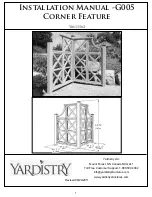
1
Introduction
Ionization Modes
4
TSQ Quantum XLS and TSQ Quantum GC User Guide
Thermo Scientific
Electron Ionization Mode
In electron ionization (EI) mode, electrons are emitted by a heated, wire filament that has
electric current running through it, by thermionic emission. The filament and its reflector are
typically maintained at a -70 V potential relative to the ion source block. This potential
accelerates the electrons through the ionization space, called the
ion volume
. These energetic
electrons interact with neutral, gas-phase analyte molecules present in the ion volume and
cause the analyte to lose an electron and produce a radical cation:
M + e
-
--> M
+
+ 2e
-
Frequently, numerous cleavage reactions give rise to fragment ions, which provide structural
information about the analyte.
EI positive-ion mode is the only commonly used EI mode.
Chemical Ionization Mode
In chemical ionization (CI) mode, ionization of the sample molecules is a multi-step process:
1. Reagent gas is introduced into the CI ion volume at a flow (for methane) of about
2 mL/min, along with sample vapors typically present at partial pressures of less than
one-thousandth that of the reagent gas.
2. The energetic (typically 100 eV) electrons emitted by the heated filament interact to
ionize the reagent gas and form a plasma. This reaction also produces thermal electrons.
3. Reagent gas ions react with reagent gas molecules to form a variety of secondary ions that
are stable with respect to further reaction with reagent gas.
For example, for methane:
CH
4
+ e
-
----> CH
4
+.
+ 2e
-
CH
4
+ e
-
----> CH
3
+
+ e
-
+ H
-
CH
4
+.
+ CH
4
----> CH
5
+
+CH
3
.
CH
3
+
+ CH
4
----> C
2
H
5
+
+ H
2
4. Positive sample ions are formed by one of the following:
• The transfer of a proton from a secondary reagent gas ion to a sample molecule
• The abstraction of an electron by a reagent gas ion
• An ion association reaction in which an adduct ion is formed between a reagent gas
ion and a sample molecule
In methane positive ion mode CI, the relevant peaks observed are MH
+
, [M+CH
5
]
+
, and
[M+C
2
H
5
]
+
; but mainly MH
+
.
















































